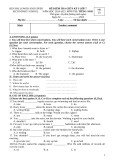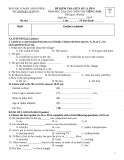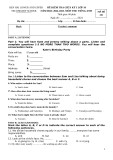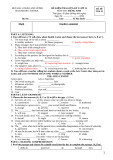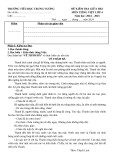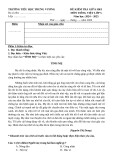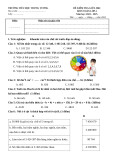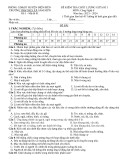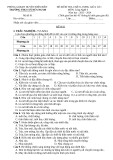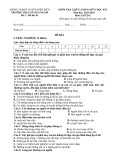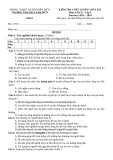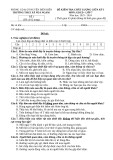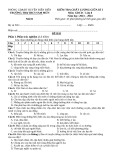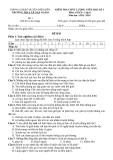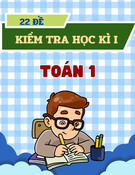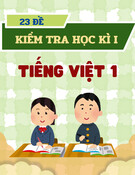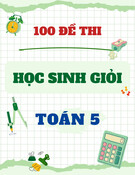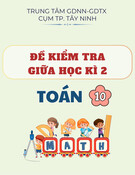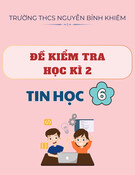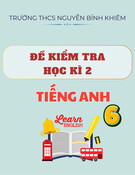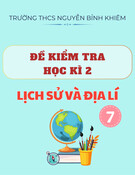Mã đề 101 Page 3/5
Linda: “What a lovely hat you have.” Anna: “______________”
A. Thanks, I’m glad you like it B. I don’t care
C. Certainly D. That’s OK
Read the following passage and mark the letter A, B, C, or D on your answer sheet to indicate the correct
word or phrase that best fits each of the numbered blanks from 26 to 30.
Parents often have dreams (26)________ their children’s future. They hope their children will have a better
life than they had. They dream that their children will do things that they couldn’t do. Parents (27)________
come to the U. S from foreign countries hope their children will have better (28)_________ here. They think
their children will have more career choices and more successful lives. Parents make many sacrifices so that their
children will have more (29) ________ . They think their children will remain close to them because of this.
Some children understand and appreciate these sacrifices and remain close to their parents. (30)___________,
other children feel ashamed that their parents are so different from other Americans.
Question 26.
A. from B. with C. for D. in
Question 27.
A. who B. which C. whom D. when
Question 28.
A. educate B. educated C. educational D. education
Question 29.
A. responsibilities B. opportunities
C. possibilities D. abilities
Question 30.
A. Despite B. However C. Therefore D. So
Read the following passage and mark the letter A, B, C, or D on your answer sheet to indicate the correct
answer to each of the questions from 30 to 34.
Marriage nowadays is a choice people make on their own, but this has not always been the case in
society. Thousands of years ago, the average lifespan was shorter than it is today. A man usually lived until he
was about 40 years old, while women died even sooner because of childbirth. There were many wars and
illnesses, and people had to protect themselves by having more children while they were still young. The parents
lived through their children.
Marriage was not so much a romantic love story but a business transaction, or deal. Most marriages were
arranged between parents while their children were still very young. It was the custom that the fathers made the
decision on whom their children were going to marry. The mothers had little say in it since they rarely made any
decisions outside the household. The fathers would meet to arrange the wedding date and the money given for
the bride on her wedding date. The more money and land a girl had, the more chances she had to marry well.
Therefore, it was important that her father choose the bridegroom very well. Usually, it was someone who came
from a good family or who was rich too. It was very unlikely that people married outside their social class. A few
well-off and rich merchants got to marry poorer noblewomen and became King’s business advisors. In a way,
poor peasants had an easier choice as it was less important whom they married.
The practice of arranged marriage is still common in some countries in the Middle East, such as India or
Pakistan. Here, social classes are still strongly divided and very well-kept. Often, however, arranged marriages
are a sign that people do not want to let go of the past, which gives them comfort and security in an ever-
changing world.
Question 31. The author mentions all of the following in the passage EXCEPT __________. .
A. The wedding date was decided by the fathers
B. People tended to marry outside their social class
C. Men made almost all decisions inside the family
D. Marriage used to be a deal between two families
Question 32. What does the passage mainly discuss?
A. Marriage practices in modern society.
B. Mothers' roles in their children's marriage.
C. The practice of arranged marriage.
D. Marriage as a business transaction today.
Question 33. According to paragraph 1, women died even sooner than men because of _____________.






